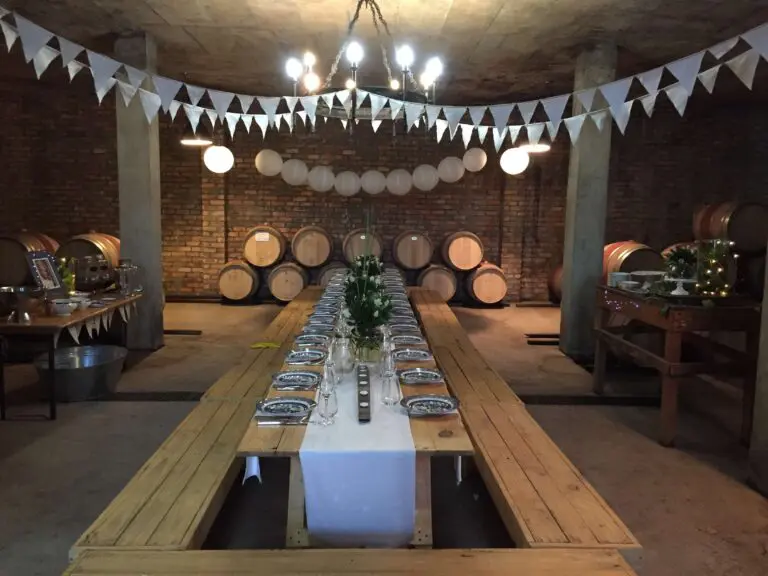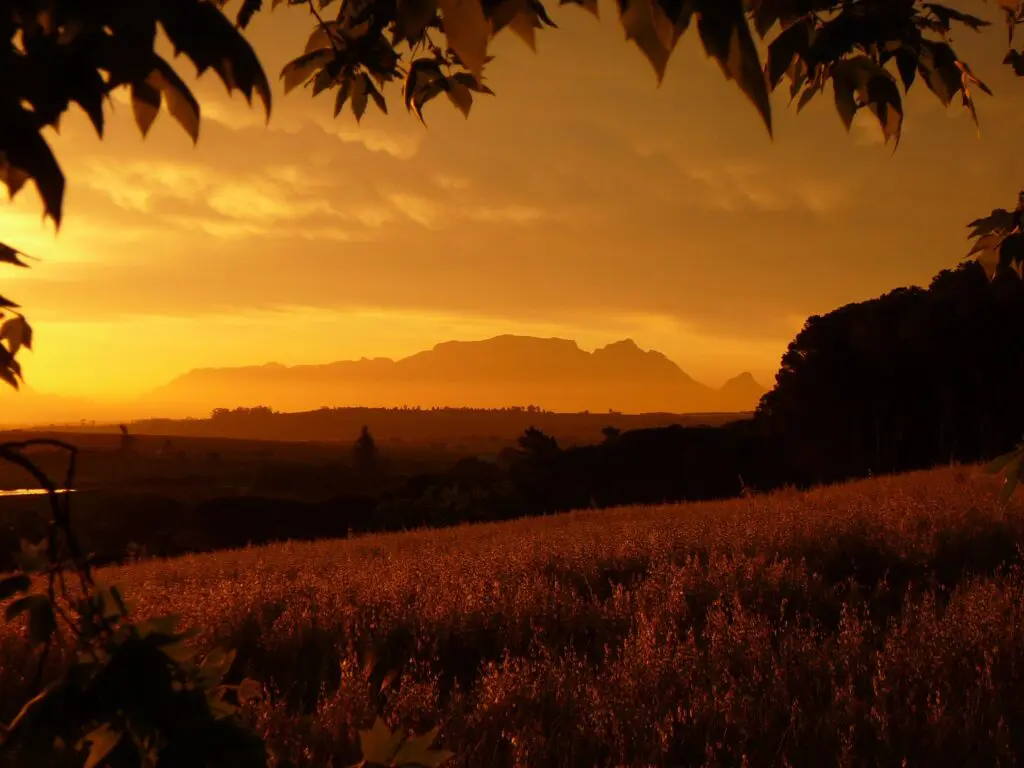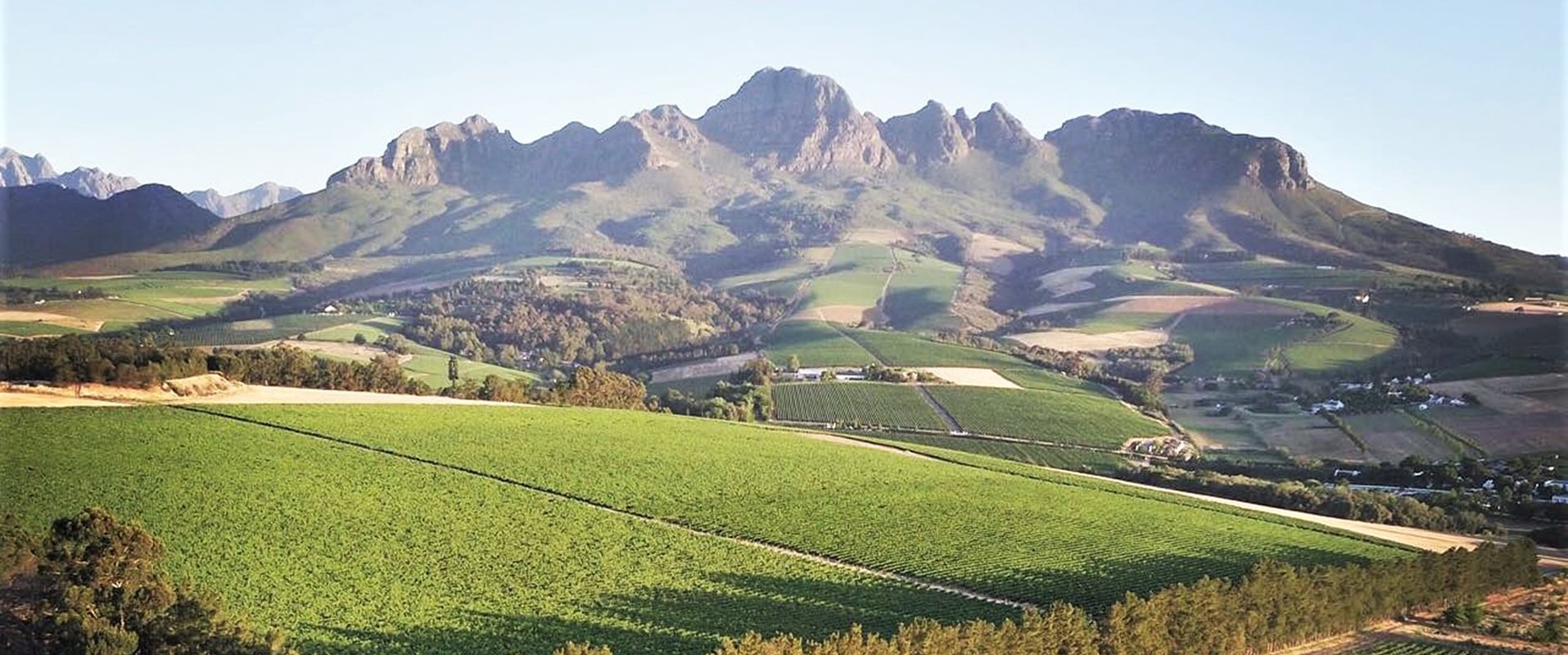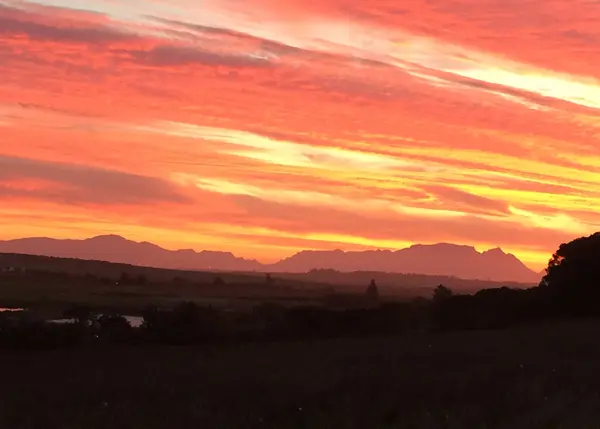WINERY
Graceland Vineyards
TERROIR
Located in Stellenbosch's internationally acclaimed GoldenTriangle region, known for havingthe finest soil for red wines in South Africa.
Syrah is grown for SUBRINA. The grapes are carefully harvested and naturally fermented to produce this red wine. We interviewed the owners, Susan and Paul McNaughton, about the history of Graceland and their thoughts on winemaking.
History of Graceland Vineyards
Why did you start winemaking, how did you decide the land,
Paul had a coal trading and mining company in Johannesburg, which he sold in 1989.
This gave the family the opportunity to move to the Winelands, which was always Pauls dream.
Paul went to Stellenbosch University, and as a student, learnt where the best wines came from, which meant, those were the best soils for wine production.
He was determined to find a property in this area, which was quite difficult, as they do not change ownership very often.
He called an old friend who used to have vineyards nearby, and by chance we found this piece of land.
Besides being perfect soil for red wines, the view is beautiful!

Stellenbosch
Soil, Climate, Characteristics of the region, and history
Stellenbosch wine of origin covers quite a large area, and is broken into wards.
We are in the Stellenbosch Mountain ward, which is on the south side of Stellenbosch, on the slopes of the Helderberg Mountain.
Our vineyards are south sloping, facing the seaOur vineyards are We are towards the sea, which is 12km away.
Each area has different a soil types and micro climates.
This area is known as the Golden Triangle, and particularly well known for the best quality grapes, particularly red wine.
The base of the triangle is the R44 road between Stellenbosch and Somerset West.
The two other sides are demarcated by the mountains.

Vineyards
Syrah Parcel
Graceland has altitude variation from 80m to 280m.
The two Syrah blocks are planted midway on the farm, 130-150m.
The vines are now 22 years old.
Soil type is mainly heavier Klapmuts, over decomposed granite, and Table Mountain sandstone.
The smaller block, lower on the slope, has a higher water carrying capacity.
Having drip irrigation, in sections, allows us to irrigate sections separately, so the vines do not stress.
Althoughstress, although we do keep water use to a minimum.
South Africa is blessed with lots of sunshine, and Stellenbosch has as a yearly average of 9 hours per day.
January/February having the most, with June/July the least.
Graceland is on a slight southern slope, which is a big advantage, as it is a little cooler in the very hot months.
This area gets a gentle south westerly wind, which is very good to keep the vines dry, and reduces the chance of getting mildew in the vines.

Efforts to Reduce Pesticide Use and Improve Canopy Management
To Minimize Impact on the Ecosystem
We do not, and have never used pesticides.
Our minimal spray programme could be classified as organic.
I have drastically reduced the use of nitrogen in the form of fertiliser, by using organic pellets, which are produced from the manure of ostriches.
I am in the last stage of converting Graceland to 100% organic practices.
It is important to us to have a light footprint on the ecology.
400 indigenous trees have been planted, and another 400 not indigenous.
With these, our natural fauna and flora (birds, bees and wild animals) have increased a lot.
We have left the wetlands to support the animal and plants in that area.
Our canopy management is simple.
We have three wires to hold the vines upright, which we move as the shoots grow.
We keep the base of the vines and stems clear of shoots.
We tip the ends of the shoots if they grow too long.
All our management is done by hand.
Hand pruning in the traditional way, leaving two eyes for shoots to bud from.
Picking is by hand into crates.


Winemaking:
From Harvest to Fermentation
It is of utmost importance to us, to leave the soil in better condition than when we bought the farm.
We are close to organic, and continue to strive, in all areas, to leave a light footprint.
The grapes were handpicked between 13th March and the 28th March, in 5 tonne batches.
Wild yeast fermented for 8 days in open cement tanks.
Since 2005, all our wines are fermented naturally.
Healthy grapes ferment well, and we do not add SO2 at crush.
Only yeast nutrients are added during ferment.
An eight day ferment seems to be the normal, keeping the temperatures below 30 degrees C.
The taste of our Syrah is firstly from the soil, and intervening as little as possible in the winemaking process.
Sulphur has to be added after secondary fermentation, Malofermentation, Malo lactic, non alcoholicnon-alcoholic fermentation.
If not, the wine will go off.
It is critical to addWhat to watch out for is just enough sulphur to keep the wine safe, but not too much.
We monitor the SO2 levels constantly during barrel maturation.

Graceland Syrah
The Journey to Becoming This Wine
Mid ferment temperatures did not exceed 28°c.
Matured in French and American oak for 18 months.
15%, 1st fill barrels, the balance, 2nd and 3rd fill.
Racked three times prior to bottling.
The wine was bottled unfiltered and unfined.
Graceland Syrah is reminiscent of cooler European style Syrah, with white pepper, abundant raspberries and strawberries.
Subtle mouth filling flavours, that linger on your palate.
Good food match with rich and spicy, or elegant dishes.


Challenges in Running a Winery
I don't think we have unsurmountable problems.
Of courseOf course, there are always surprises in operating aa business, especially wine growing.
Changes in the weather meanWeather changes, means you have to be able to make quick decisions on when to pick.
The weather determines the style of the wine and barrels are selected accordingly.style of wine that is a result of the weather, will make the decisions on which barrels you will select.

Thoughts on the people who work at the winery
We have very good staff working for us, that I have trained over the years.
Our senior tractor driver has been here for 26 years, and the rest around 10 years.
They all play an important part in varioustheir areas, but we ultimately work as a team.

Goals in Winemaking
At this stage, we would just like to keep on making wine as long as possible! On a more serious note, every year we do a business revue on viticulture, winemaking and logistics.
We try hard to make the best wine for the price, and be as efficient as possible.
Passion or thoughts would like to deliver to the people in Japan who enjoy this wine
I consider myself extremely lucky to have found a job that really inspires me.
Working in the vines makes me very happy, and being able to see the appreciation of our wines, internationally, is so rewarding.








